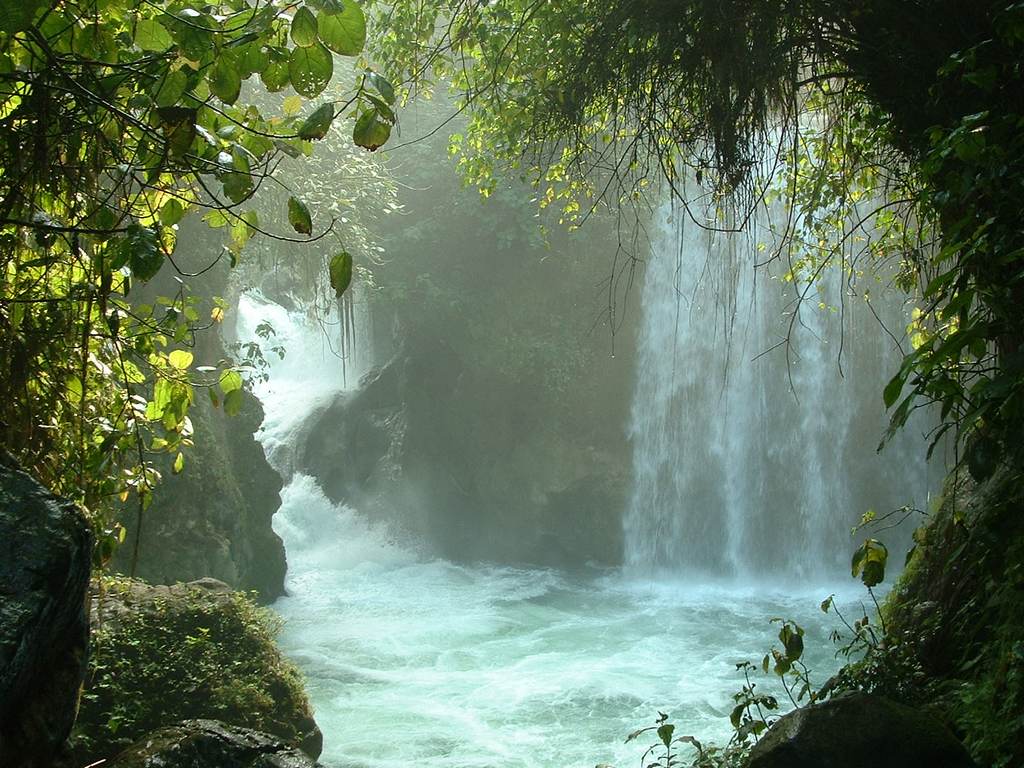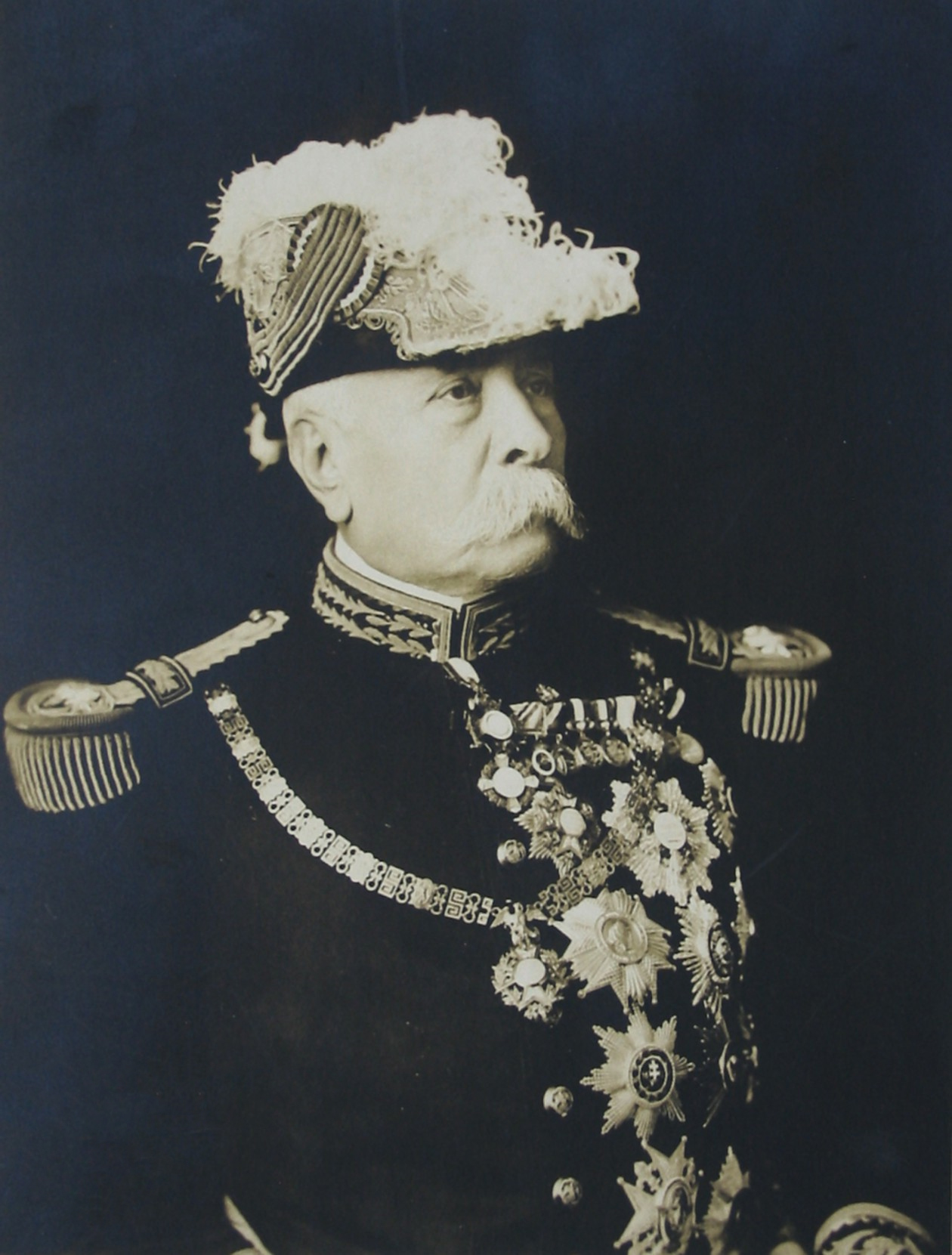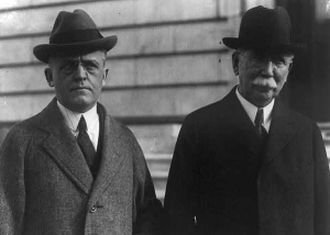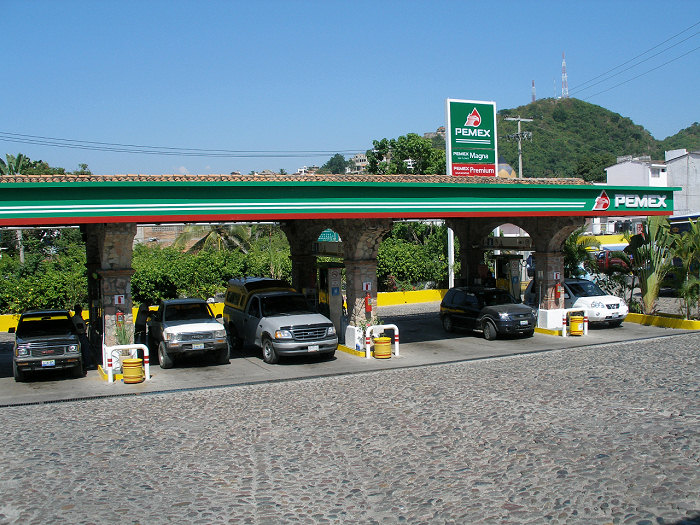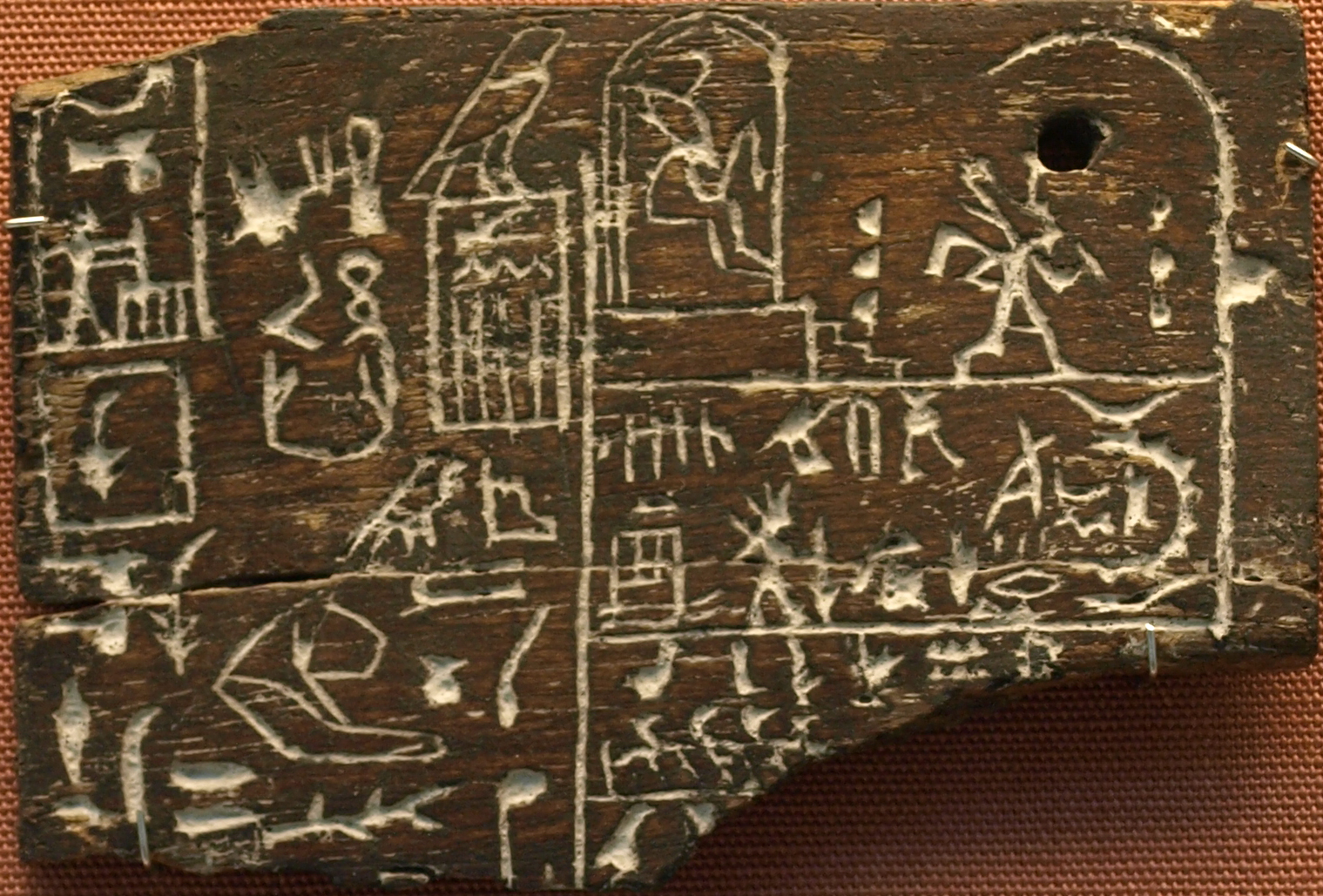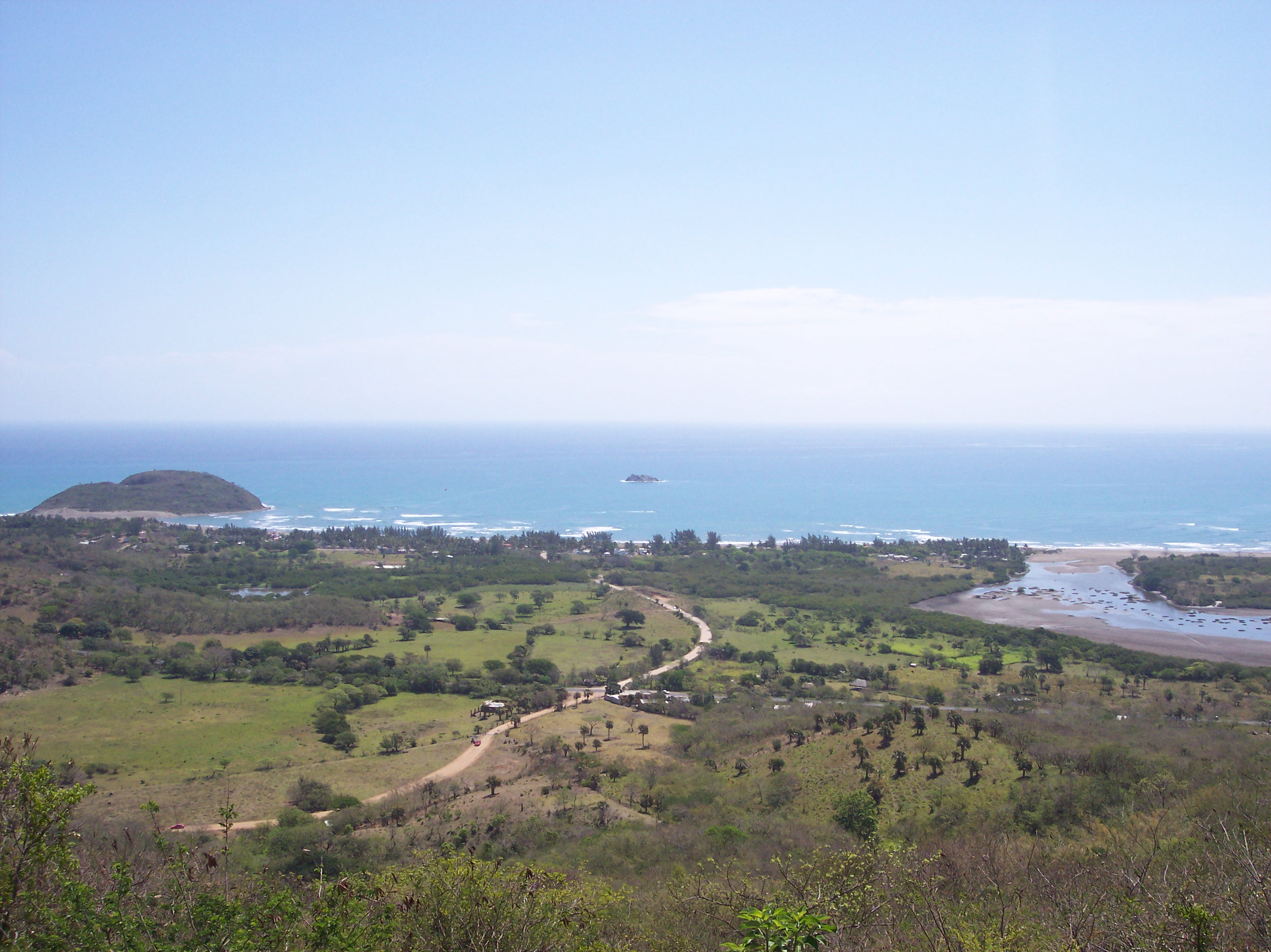|
Гүbano, San Luis PotosГӯ
Гүbano is a town and municipality in the Mexican state of San Luis PotosГӯ in central Mexico. It is located in the eastern corner of the state, on the border with Veracruz, in the Huasteca region. Its name comes from the Spanish word for ebony. The area was the birthplace, on May 14, 1901, of the petroleum industry in Mexico, with the first strike made by the ''Mexican Petroleum Company of California'' (later part of Pan American Petroleum and Transport Company), owned by Edward L. Doheny, assisted by geologist Ezequiel OrdГіГұez of the Mexican Central Railway. In 1914, during the Mexican Revolution The Mexican Revolution () was an extended sequence of armed regional conflicts in Mexico from 20 November 1910 to 1 December 1920. It has been called "the defining event of modern Mexican history". It saw the destruction of the Federal Army, its ..., the Battle of Гүbano took place in the town. References Municipalities of San Luis PotosГӯ {{SanLuisPotosГӯ-geo-stub ... [...More Info...] [...Related Items...] OR: [Wikipedia] [Google] [Baidu] [Amazon] |
Municipalities Of Mexico
Municipalities () are the administrative divisions under the List of states of Mexico, states of Mexico according to the Constitution of Mexico, constitution. Municipalities are considered as the second-level administrative divisions by the Federal government of Mexico, federal government. However, some state regulations have designed intrastate regions to administer their own municipalities. Municipalities are further divided into Localities of Mexico, localities in the structural hierarchy of administrative divisions of Mexico. As of December 2024, there are 2,462 municipalities in Mexico. In Mexico, municipalities should not be confused with cities (). Cities are Localities of Mexico, locality-level divisions that are administered by the municipality. Although some List of cities in Mexico, larger cities are consolidated with its own municipality and form a single level of governance. In addition, the 16 Boroughs of Mexico City, boroughs of Mexico City are considered municipali ... [...More Info...] [...Related Items...] OR: [Wikipedia] [Google] [Baidu] [Amazon] |
Huasteca
La Huasteca is a geographical and cultural region located partially along the Gulf of Mexico and including parts of the states of Tamaulipas, Veracruz, Puebla, Hidalgo (state), Hidalgo, San Luis PotosГӯ, QuerГ©taro and Guanajuato. It is roughly defined as the area in which the Huastec people had influence when their civilization was at its height during the Mesoamerican period. Today, the Huastecs occupy only a fraction of this region with the Nahua people now the most numerous indigenous group. However, those who live in the region share a number of cultural traits such as a style of music and dance, along with religious festivals such as Xantolo. Geography and environment Historically and ethnically, the Huasteca region is defined by the area dominated by the Huastecs at their height. The actual extension of the region is somewhat disputed as well as how it should be sub-divided. Geographically it has been defined as from the Sierra Madre Oriental to the Gulf of Mexico with t ... [...More Info...] [...Related Items...] OR: [Wikipedia] [Google] [Baidu] [Amazon] |
Mexican Revolution
The Mexican Revolution () was an extended sequence of armed regional conflicts in Mexico from 20 November 1910 to 1 December 1920. It has been called "the defining event of modern Mexican history". It saw the destruction of the Federal Army, its replacement by a Liberation Army of the South, revolutionary army, and the transformation of Mexican culture and Federal government of Mexico, government. The northern Constitutionalists in the Mexican Revolution, Constitutionalist faction prevailed on the battlefield and drafted the present-day Constitution of Mexico, which aimed to create a strong central government. Revolutionary generals held power from 1920 to 1940. The revolutionary conflict was primarily a civil war, but foreign powers, having important economic and strategic interests in Mexico, figured in the outcome of Mexico's power struggles; United States involvement in the Mexican Revolution, the U.S. involvement was particularly high. The conflict led to the deaths of around ... [...More Info...] [...Related Items...] OR: [Wikipedia] [Google] [Baidu] [Amazon] |
Mexican Central Railway
The Mexican Central Railway (''Ferrocarril Central Mexicano'') was one of the primary pre-nationalization Rail transport in Mexico, railways of Mexico. Incorporated in Massachusetts in 1880, it opened the main line in March 1884, linking Mexico City to Ciudad JuГЎrez, across the Rio Grande from El Paso, TX, El Paso and connections to the Southern Pacific Railroad, Texas and Pacific Railway, and Atchison, Topeka and Santa Fe Railway. Other major branches included Irapuato to Guadalajara (completed in 1888), Chicalote, Aguascalientes, Chicalote to Tampico (completed in 1890), and Guadalajara to Manzanillo, Colima, Manzanillo (completed in 1908). The Mexican Central acquired control in June 1901 of the Monterey and Mexican Gulf Railroad, which connected the Mexican International Railroad at Reata, Coahuila, Reata (near Monterrey) to Tampico, and connected its main line with this line at the Monterrey end through a branch from GГіmez Palacio, Durango, GГіmez Palacio. The Mexico, Cuerna ... [...More Info...] [...Related Items...] OR: [Wikipedia] [Google] [Baidu] [Amazon] |
Edward L
Edward is an English male name. It is derived from the Anglo-Saxon name ''Д’adweard'', composed of the elements '' Д“ad'' "wealth, fortunate; prosperous" and '' weard'' "guardian, protectorвҖқ. History The name Edward was very popular in Anglo-Saxon England, but the rule of the Norman and Plantagenet dynasties had effectively ended its use amongst the upper classes. The popularity of the name was revived when Henry III named his firstborn son, the future Edward I, as part of his efforts to promote a cult around Edward the Confessor, for whom Henry had a deep admiration. Variant forms The name has been adopted in the Iberian peninsula since the 15th century, due to Edward, King of Portugal, whose mother was English. The Spanish/Portuguese forms of the name are Eduardo and Duarte. Other variant forms include French Гүdouard, Italian Edoardo and Odoardo, German, Dutch, Czech and Romanian Eduard and Scandinavian Edvard. Short forms include Ed, Eddy, Eddie, Ted, Teddy an ... [...More Info...] [...Related Items...] OR: [Wikipedia] [Google] [Baidu] [Amazon] |
Pan American Petroleum And Transport Company
The Pan American Petroleum and Transport Company (PAT) was an oil company founded in 1916 by the American oil tycoon Edward L. Doheny after he had made a huge oil strike in Mexico. Pan American profited from fuel demand during World War I, and from the subsequent growth in use of automobiles. For several years Pan American was the largest American oil company, with production assets in the United States, Mexico and Venezuela and marketing operations in the United States, Mexico, the United Kingdom and Brazil. In 1924 Pan American was involved in the Teapot Dome scandal over irregularities in the award of a U.S. government oil concession. Standard Oil of Indiana obtained a majority stake in 1925. The company sold its foreign properties to Standard Oil of New Jersey in 1932. What was left of Pan American, was merged with Standard Oil of Indiana in 1954, later renamed to Amoco after the American Oil Company, a Pan American subsidiary. Origins Edward L. Doheny was a prospector wh ... [...More Info...] [...Related Items...] OR: [Wikipedia] [Google] [Baidu] [Amazon] |
Petroleum Industry In Mexico
The petroleum industry in Mexico makes Mexico the eleventh largest producer of oil in the world and the thirteenth largest in terms of net exports. Mexico has the seventeenth largest oil reserves in the world, and it is the fourth largest oil producer in the Western Hemisphere behind the United States, Canada and Brazil. Mexico is a member of OPEC+ and the North American Free Trade Agreement. The petroleum sector is a significant contributor to the Mexican economy, with oil revenues generating almost 7% of Mexico's export earnings. In 2014, income from the petroleum sector made up 33% of public sector income, and taxes on the revenues of the state-owned oil company PetrГіleos Mexicanos (Pemex) formed roughly 20% of all tax revenues collected by the Mexican government in 2022. While a significant contributor to the overall Mexican economy, the industry has been criticized as a driver of pollution and environmental destruction.Cavazos-Arroyo, J., PГ©rez-ArmendГЎriz, B., & Mau ... [...More Info...] [...Related Items...] OR: [Wikipedia] [Google] [Baidu] [Amazon] |
Ebony
Ebony is a dense black/brown hardwood, coming from several species in the genus '' Diospyros'', which also includes the persimmon tree. A few ''Diospyros'' species, such as macassar and mun ebony, are dense enough to sink in water. Ebony is finely textured and has a mirror finish when polished, making it valuable as an ornamental wood. It is often cited as one of the most expensive woods in the world. Etymology The word ''ebony'' comes from the Ancient Egyptian ', through the Ancient Greek ('), into Latin () and Middle English. Species Species of ebony include '' Diospyros ebenum'' (Ceylon ebony), native to southern India and Sri Lanka; '' D. crassiflora'' (Gabon ebony), native to western Africa; '' D. humilis'' (Queensland ebony), native to Queensland, the Northern Territory, New Guinea and Timor; and '' D. celebica'' (Sulawesi ebony), native to Indonesia and prized for its luxuriant, multi-colored wood grain. Mauritius ebony, '' D. tessellaria'', was largely exploited by ... [...More Info...] [...Related Items...] OR: [Wikipedia] [Google] [Baidu] [Amazon] |
Veracruz
Veracruz, formally Veracruz de Ignacio de la Llave, officially the Free and Sovereign State of Veracruz de Ignacio de la Llave, is one of the 31 states which, along with Mexico City, comprise the 32 Political divisions of Mexico, Federal Entities of Mexico. Located in eastern Mexico, Veracruz is bordered by seven states, which are Tamaulipas, San Luis PotosГӯ, Hidalgo (state), Hidalgo, Puebla, Oaxaca, Chiapas, and Tabasco. Veracruz is divided into Municipalities of Veracruz, 212 municipalities, and its capital city is Xalapa, Xalapa-EnrГӯquez. Veracruz has a significant share of the coastline of the Gulf of Mexico on the east of the state. The state is noted for its mixed ethnic and indigenous populations. Cuisine of Veracruz, Its cuisine reflects the many cultural influences that have come through the state because of the importance of the port of Veracruz (city), Veracruz. In addition to the capital city, the state's largest cities include Veracruz, Coatzacoalcos, CГіrdoba, V ... [...More Info...] [...Related Items...] OR: [Wikipedia] [Google] [Baidu] [Amazon] |
Administrative Divisions Of Mexico
Mexico is a federal republic composed of 32 federative entities (): 31 states and Mexico City. According to the Constitution of Mexico, the states of the federation are free and sovereignty, sovereign in all matters concerning their internal affairs. Since 2016, Mexico City was made a fully autonomous entity on par with the states. Each state federative entity has its own congress and constitution. Overview The current structural hierarchy of Mexican administrative divisions are outlined by Constitution of Mexico as well as the constitutions and laws of federative entities. The laws together established the following levels of administrative divisions. The levels in bold are those regulated by the federal constitution. * List of states of Mexico, State () ** Intrastate region, Region () or district () вҖ” only in some states *** Municipalities of Mexico, Municipality () **** List of cities in Mexico, City (), town (), village (), or Localities of Mexico, others ***** Coloni ... [...More Info...] [...Related Items...] OR: [Wikipedia] [Google] [Baidu] [Amazon] |
Instituto Nacional Para El Federalismo Y El Desarrollo Municipal
The Instituto Nacional para el Federalismo y el Desarrollo Municipal (''National Institute for Federalism and Municipal Development'', better known by the acronym INAFED) is a decentralised agency of the Mexico, Mexican federal government. It has responsibility for promoting the ideals of federalism between the several levels of Mexican government, government in Mexico, by acting to coordinate and implement policies, programmes and services that are designed to strengthen inter-governmental relations between the federal and "subsidiary" levels of governance at the States of Mexico, state and municipio (Mexico), municipal levels. The agency comes under the overall responsibility of the SecretarГӯa de GobernaciГіn (SEGOB), the Secretariat of the Interior, the government department responsible for administering the country's internal affairs. INAFED was established in July 2002, replacing and expanding upon the role of its predecessor agency, the ''Centro Nacional de Desarrollo Muni ... [...More Info...] [...Related Items...] OR: [Wikipedia] [Google] [Baidu] [Amazon] |
Mexico
Mexico, officially the United Mexican States, is a country in North America. It is the northernmost country in Latin America, and borders the United States to the north, and Guatemala and Belize to the southeast; while having maritime boundary, maritime boundaries with the Pacific Ocean to the west, the Caribbean Sea to the southeast, and the Gulf of Mexico to the east. Mexico covers 1,972,550 km2 (761,610 sq mi), and is the List of countries by area, thirteenth-largest country in the world by land area. With a population exceeding 130 million, Mexico is the List of countries by population, tenth-most populous country in the world and is home to the Hispanophone#Countries, largest number of native Spanish speakers. Mexico City is the capital and List of cities in Mexico, largest city, which ranks among the List of cities by population, most populous metropolitan areas in the world. Human presence in Mexico dates back to at least 8,000 BC. Mesoamerica, considered a cradle ... [...More Info...] [...Related Items...] OR: [Wikipedia] [Google] [Baidu] [Amazon] |
